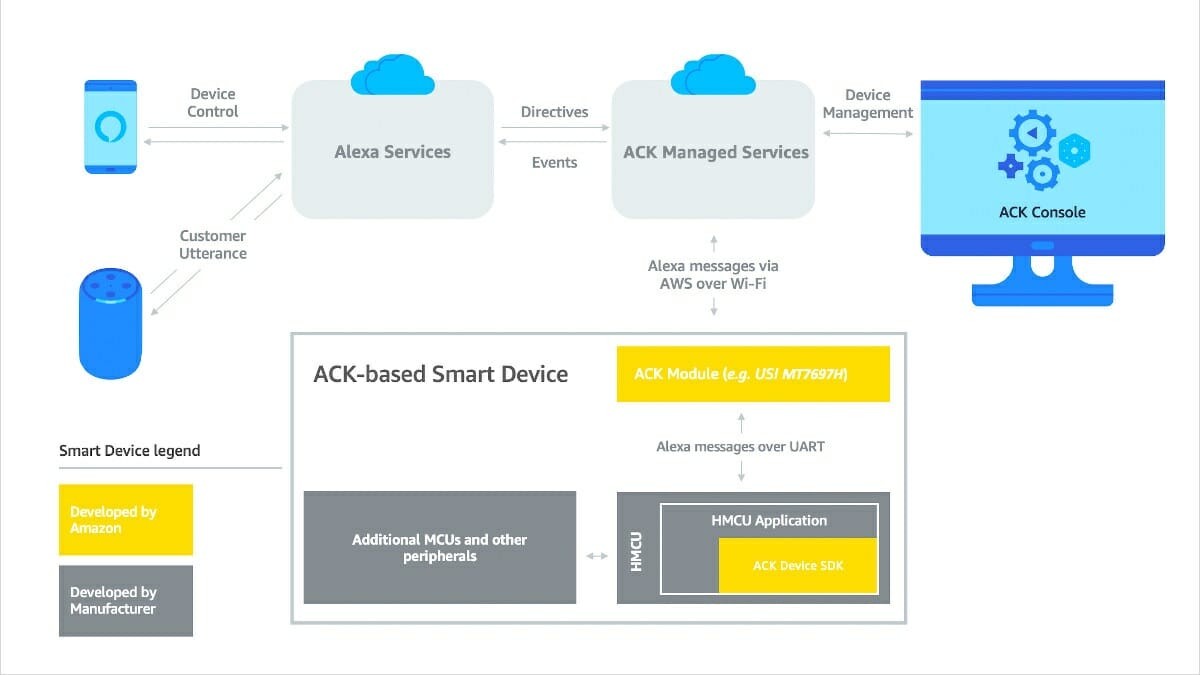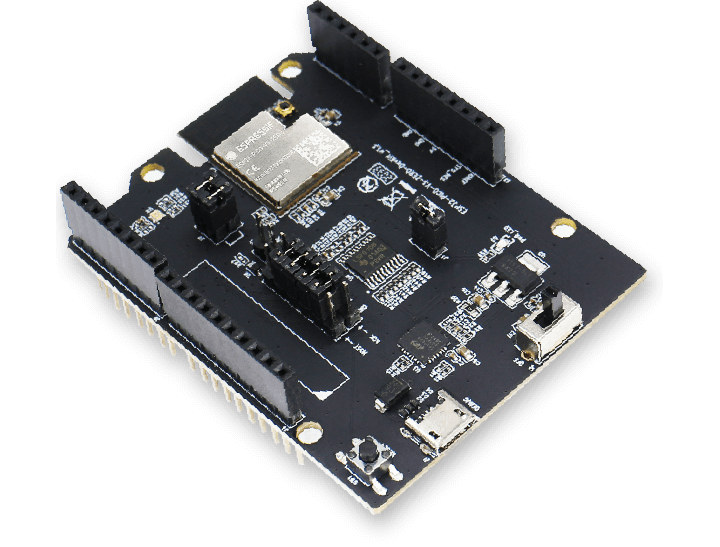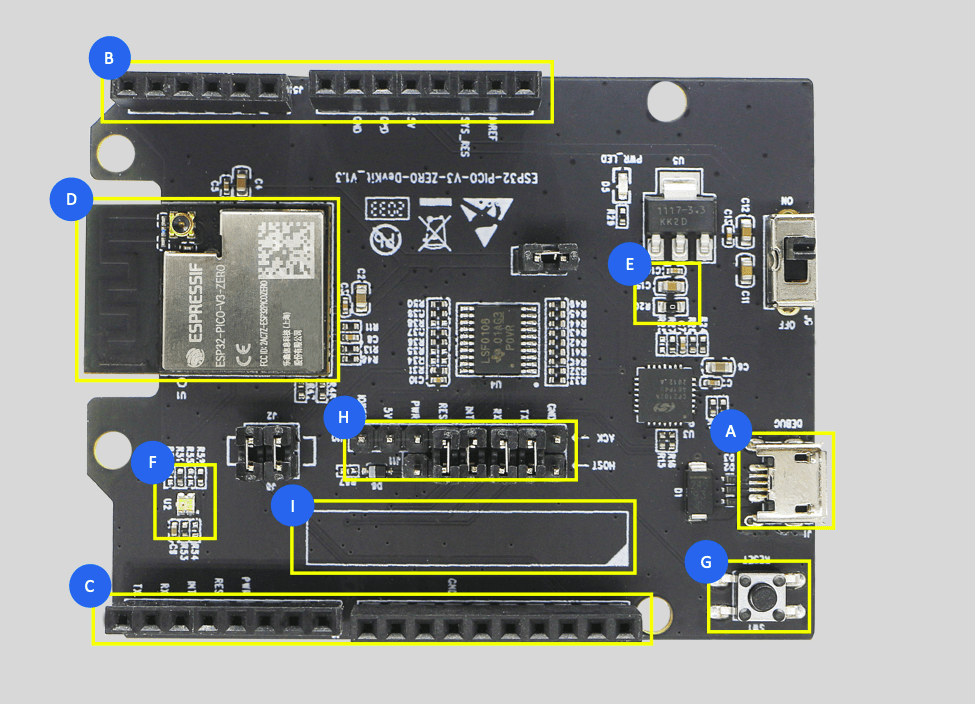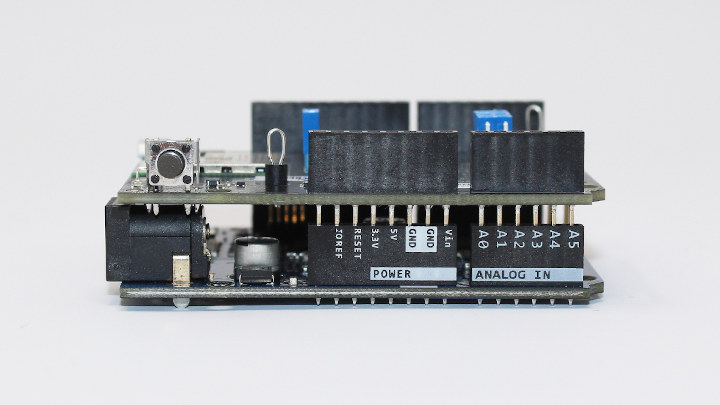Last summer, Espressif and Amazon jointly announced the ESP32-PICO-V3-ZERO Alexa Connect Kit module providing out-of-box connectivity to ACK (Alexa Connect Kit) cloud services, support for features such as Alexa control, “Frustration-Free Setup” and Amazon Dash replenishment for connected devices.
At the time, the module was still at the developer preview stage, and you had to create your own carrier board for the module. But now development has been easier with the companies launching ESP32-PICO-V3-ZERO-DevKit compatible with Arduino Zero development board.
ESP32-PICO-V3-ZERO-DevKit specifications:
- Wireless module – Espressif Systems ESP32-PICO-V3-ZERO with ESP32-PICO-V3 System-in-Package (SiP) based on ESP32-V3 dual-core Xtensa LX6 WiFI and Bluetooth SoC, a 4 MB SPI flash, a crystal oscillator, filter capacitors, and an RF matching network.
- Expansion – Arduino Zero compatible pass-through headers
- Debugging – 1x micro-USB port
- Misc – Power & Status LEDs, Reset button, jumpers to route specific signals to the headers, DSN (Device Serial Number – See “I” below)
Amazon Alexa Connect Kit (ACK)
It’s a fair question to ask but what is Alexa Connect Kit (ACK) is all about. Amazon explains:
Alexa Connect Kit (ACK) is a managed service that makes it easy to integrate Alexa into your product. With ACK, you don’t need to write an Alexa skill, manage a cloud service, or develop complex network and security firmware to connect your product to Alexa. Instead, you integrate the ACK module into your product and pay a one-time fixed cost. ACK provides the managed services, software, and tools you can use to develop and manage your Alexa-connected products on an ongoing basis. Your customers benefit from Alexa device control and other features, such as Amazon’s Frustration Free Setup (FFS) and Wi-Fi Simple Setup (WSS).
It’s basically a turnkey solution to implement Amazon Alexa into commercial products.

Getting started with ESP32-PICO-V3-ZERO-Devkit and Amazon ACK
There are actually two ACK development kits for Amazon’s Alexa Connect Kit: ESP32-PICO-V3-ZERO-Devkit and USI MT7697H which the latter apparently easier to source from outside the US.
Neither are standalone boards, and instead, they are meant to be connected to the Arduino Zero board – the HMCU board – as a shield.
You’ll then need a 2.4 GHz WiFi network, a Windows, Linux or Mac OS computer with a spare USB port plus the Arduino IDE Python 3.0, the ACK Device SDK, and install the Amazon Alexa app on your smartphone plus an Amazon Developer account. There’s a demo sketch called AlexaConnectKit_SmartLight that you can upload from the Arduino IDE to try it out and control the LED from your smartphone. This is all explained in detail on Amazon Developer website.
As I understand it, ESP32-PICO-V3-ZERO-DevKit may have been available for a while, but previously you had to contact Amazon with your project details before getting hold of it. But now it’s possible to purchase the ESP32 based ACK development kit for $70 directly from Digikey or Mouser without questions asked, although a “US-based Amazon Developer Account” is still required.

Jean-Luc started CNX Software in 2010 as a part-time endeavor, before quitting his job as a software engineering manager, and starting to write daily news, and reviews full time later in 2011.
Support CNX Software! Donate via cryptocurrencies, become a Patron on Patreon, or purchase goods on Amazon or Aliexpress








what is this “RF matching network”?
It’s a part of the antenna system, to actually make it work. It’s either a set of capacitors and inductors arranged in a specific way, or a so called balun.
These kits and pre-programmed modules are very easy to use, but they are also quite expensive on a relative basis. You pay a one-time fee for these devices and get unlimited connectivity.
However, if you just paid for this connectivity yourself you’d find that it costs under $0.25/yr in AWS charges. So these modules are good for low volume devices where you don’t want to bother with running your own AWS back end, but they are not cost effective compared to running your own system at higher volumes.
It’s even possible to attach devices to Alexa for free, but you need a public IP address to do that. Amazon is trying to get people to stop building new devices using that API. But there are millions already out there so they can’t shut it down.